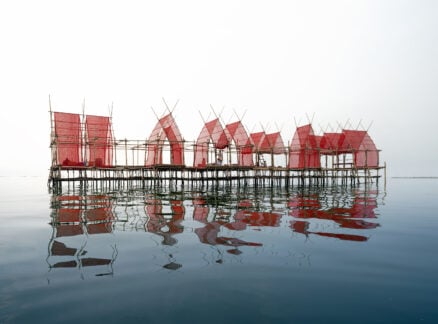March 1, 2007
Beneath the Surface
By creating a sustainable siding, two young architects aim to produce better buildings.
When Kate Wise and Anna Motzer entered their concept for paulownia-wood siding in Metropolis’s Next Generation competition last year, it was just an idea—a big idea as it turns out, but far from market ready. Called Surface Treatment, their proposal to integrate functional ornamentation into the building facade earned a runner-up position, giving the Los Angeles–based partners the validation they needed to turn their scheme into a real-world solution. Now, with plans under way to produce a prototype in the near future, Wise and Motzer are busy refining their design, building a Web site, and planting trees.
Surface Treatment developed out of the designers’ interest in paulownia, an environmentally friendly wood whose physical properties make it well suited to architectural applications. “We were amazed that people weren’t using it more for buildings,” Wise says. “When the Next Generation competition came along, it gave us the impetus to make something happen with this raw material that we thought could be so interesting.” Lightweight straight-grained paulownia is easily worked yet resists warping and splitting when nailed. It weathers well—much like cedar shingles—and with very little sap to attract insects, it rarely succumbs to infestation. “What’s unique about it is that it will resprout from its own root stock, so you don’t have to replant it,” Dan Blickenstaff, former president of the American Paulownia Association, says of the fast-growing tree. “But it’s still a niche in this country, as far as availability goes.”
Recent graduates of UCLA’s master’s program in architecture, Motzer and Wise feel that giving buildings a face-lift can help restore dilapidated downtowns to the vital communities they once were. “The last few decades have had so much cheap, bad construction,” Wise says. “More compelling facades would improve the urban environment, and that’s where our wood siding comes into play.” Vinyl siding—the inexpensive mainstream option—is the obvious offender. “We wanted to replace this awful vinyl with something very beautiful and natural,” Motzer says.
Switching from vinyl to paulownia isn’t the cheapest option, but Wise is confident that the wood could become more competitive if availability increases. Plus paulownia offers environmental and practical advantages. Although vinyl can be recycled, it takes more energy to manufacture than biodegradable paulownia. And Surface Treatment’s innovative design ensures that installation is as efficient as traditional siding while also being customizable. Its plug-in system of standardized laminated components, which are CNC milled into sculptural panels, can be arranged to accommodate the specifications of any house. Fully installed, the system forms a seamless undulating surface that integrates elements like sunshades and planters. “The idea is to make an integral, organic facade that’s decorative as well as functional,” Wise says.
Motzer and Wise, who aim to plant seedlings on family-owned land this spring, are resolving the practical details of their design—such as how to hang the panels—as they prepare to install a prototype on a friend’s Los Angeles home in the coming months. “Once we have a physical prototype, it can become a product,” Motzer says. “We’re at the point where we’ll find out if it’s going to become something.” Regardless, Surface Treatment has laid the groundwork for a partnership rooted in an architecturally based exploration of materials, technologies, and sustainable concepts: the architects, who currently have day jobs, plan to expand their extracurricular collaboration. “Surface Treatment is just one facet of our design and thought process,” Motzer says. “We’re working on a Web site that will communicate what we’re doing and what we’re interested in. Surface Treatment will be the first highlight.”





